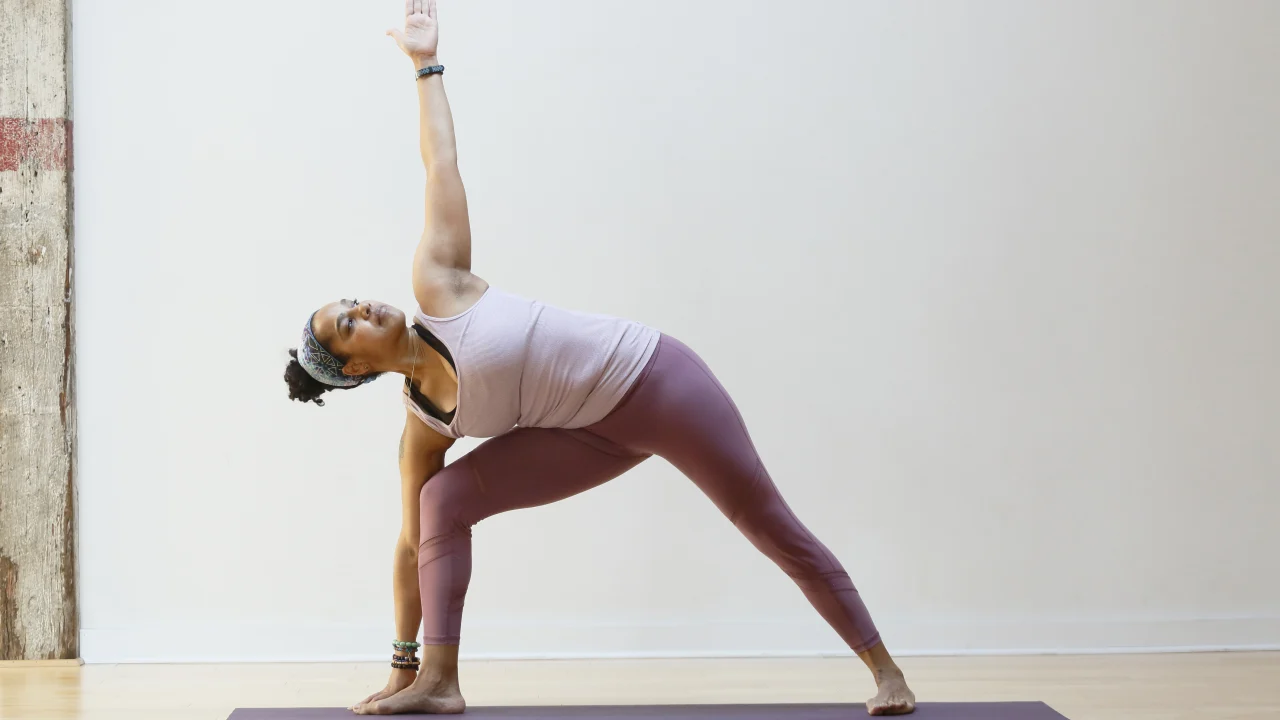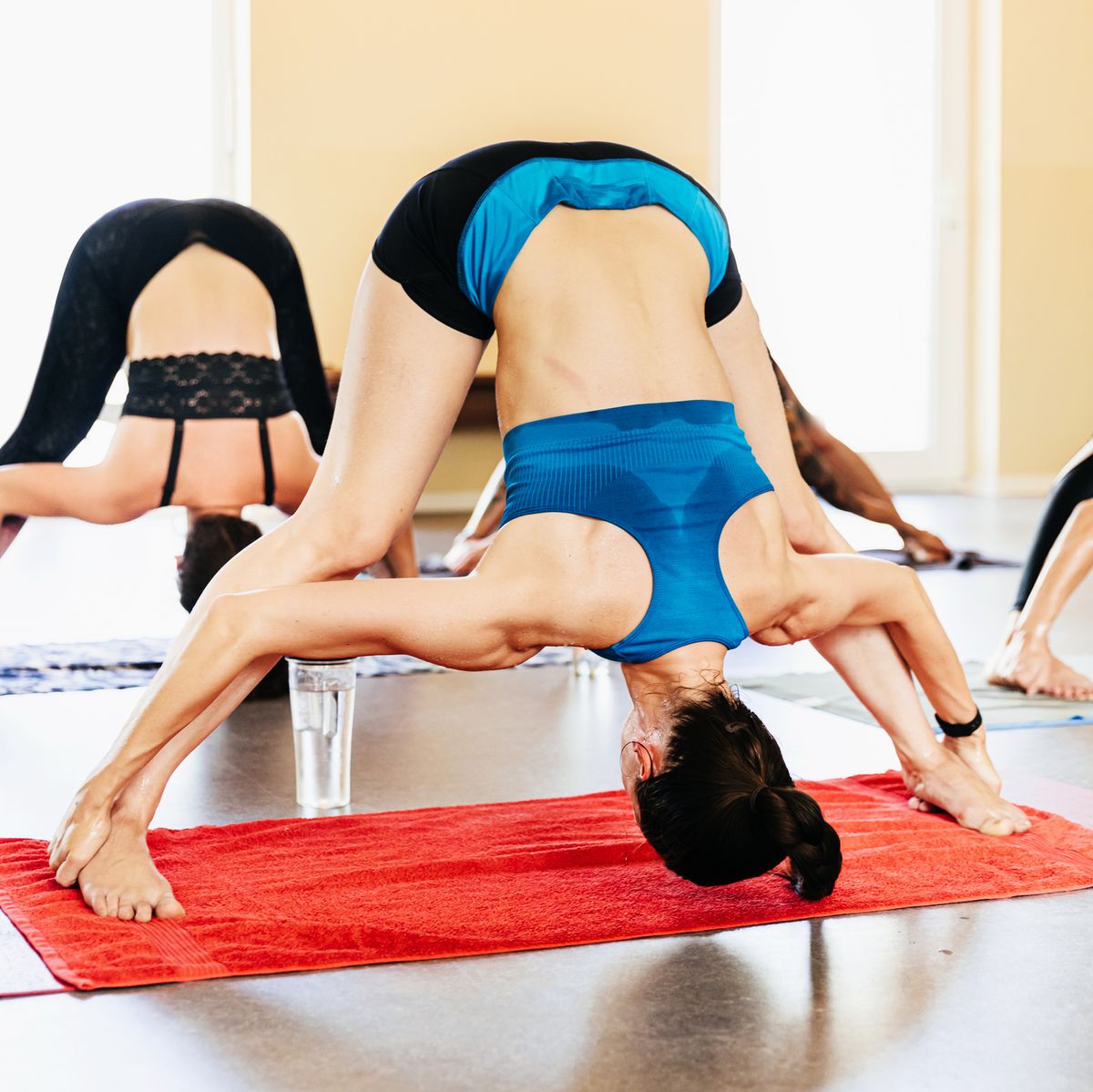I. Introduction

Hot yoga has gained popularity as a unique form of exercise that combines physical postures with elevated room temperature. In this article, we will explore the impact of hot yoga on calorie burn and its significance in achieving fitness goals.
II. Benefits and Challenges of Hot Yoga
A. Benefits of Hot Yoga
- Enhanced flexibility and range of motion: The heat in hot yoga studios loosens muscles, allowing for deeper stretches and increased flexibility.
- Increased cardiovascular endurance and strength: The combination of yoga poses and the heat in hot yoga classes elevates heart rate, providing a cardiovascular workout and enhancing overall strength.
- Mental and emotional well-being: Hot yoga promotes relaxation, stress reduction, and mental focus through deep breathing and mindfulness. It can contribute to improved mental health and emotional well-being.
B. Challenges of Hot Yoga
- Physical exertion and endurance requirements: Hot yoga can be physically demanding, requiring strength, balance, and stamina to maintain various poses in a hot and humid environment.
- Heat and humidity factors: The elevated room temperature and humidity levels in hot yoga studios create a challenging environment for the practice, potentially affecting comfort and performance.
III. Factors Influencing Calorie Burn in Hot Yoga
A. Intensity and Duration of the Practice
- Varying levels of intensity in different styles of hot yoga: Different forms of hot yoga, such as Bikram, vinyasa, or power yoga, may vary in intensity, leading to differing calorie burn rates.
- The impact of longer durations on calorie burn: Extended hot yoga sessions may contribute to increased calorie expenditure due to prolonged physical activity.
B. Body Weight and Composition

- The correlation between body weight and calorie expenditure: Body weight can influence the number of calories burned during hot yoga sessions, as higher body weight typically requires more energy to perform physical activity.
- Muscle mass and its effect on metabolism and calorie burn: Individuals with higher muscle mass tend to have a higher basal metabolic rate, leading to potentially greater calorie burn during hot yoga.
C. Room Temperature and Humidity
- The role of elevated temperature in calorie burn: Higher ambient temperatures during hot yoga can increase calorie burn as the body works harder to cool itself through perspiration.
- Impact of humidity on perspiration and water weight loss: The humidity in hot yoga studios can increase sweating, resulting in temporary water weight loss. However, this does not directly correlate with long-term calorie burn.
IV. Estimating Calorie Burn in Hot Yoga
A. Existing Research and Studies

Hot yoga has gained popularity in recent years, attracting individuals looking to combine the benefits of yoga with the added challenge of practicing in a heated room. Research studies have attempted to measure the calorie burn during hot yoga sessions to provide individuals with a better understanding of their energy expenditure.
One study conducted by researchers at Colorado State University found that individuals practicing hot yoga burned an average of 330 calories in a one-hour session. However, it is important to note that the calorie burn can vary depending on factors such as body weight, intensity of the practice, and individual metabolism.
Another study published in the Journal of Strength and Conditioning Research showed that hot yoga sessions resulted in a higher calorie burn compared to regular yoga sessions. The researchers noted that the elevated heart rate and increased sweat production in hot yoga contributed to the higher energy expenditure.
Despite the existing research, it is essential to recognize the limitations of these studies. The sample sizes in these studies were relatively small, making it challenging to generalize the findings to a larger population. Additionally, the calorie burn measured in these studies might not be applicable to every individual, as factors such as body composition and overall fitness level can influence the energy expenditure.
B. Calculating Calorie Expenditure
When estimating calorie burn in hot yoga, several factors need to be considered. These include body weight, intensity of the practice, duration of the session, and individual metabolism. While formulas and wearable technology can provide some guidance, true accuracy may be difficult to achieve.
One common method used to estimate calorie expenditure is the MET (metabolic equivalent) system. MET values provide a relative measure of the energy cost of an activity compared to rest. Hot yoga typically falls into the moderate-intensity category, with MET values ranging from 3.5 to 7. Based on an individual’s body weight and the duration of the practice, the MET values can be used to estimate the calorie burn.
Wearable technology, such as heart rate monitors and fitness trackers, can also be utilized to estimate calorie expenditure during hot yoga. These devices measure heart rate and use algorithms to calculate the energy expenditure based on the individual’s age, gender, weight, and exercise intensity. While wearable technology can provide a more accurate estimation compared to formulas, it is essential to ensure the device is properly calibrated and worn correctly for reliable results.
Overall, it is important to remember that estimating calorie burn in hot yoga is not an exact science. The individual’s experience and perception of the intensity of the practice can also influence the energy expenditure. Therefore, these calculations should be used as a rough estimate rather than an absolute measure.
V. Other Considerations in Hot Yoga Practice

A. Hydration and Electrolyte Balance Hot yoga practice leads to significant sweating, resulting in fluid and electrolyte losses. Proper hydration before, during, and after the practice is crucial to maintain optimal performance and prevent dehydration.
Before the hot yoga session, individuals should ensure they are adequately hydrated by consuming water or electrolyte-rich beverages. During the practice, it is essential to listen to the body’s signals and drink water regularly to replace fluids lost through sweat.
Electrolyte replacement is also crucial during hot yoga practice. The excessive sweating can cause imbalances in electrolyte levels, leading to muscle cramps and fatigue. Consuming sports drinks or incorporating electrolyte supplements can help maintain the balance of sodium, potassium, and other essential electrolytes.
B. Modifying Practice for Individual Needs Every individual has unique fitness levels, goals, and physical limitations. Adjusting the intensity and duration of hot yoga practice is important to meet these individual needs.
For beginners or individuals with lower fitness levels, it is recommended to start with shorter sessions and gradually increase the duration and intensity over time. This allows the body to adapt to the heat and physical demands of hot yoga.
Similarly, individuals with health conditions or physical limitations should modify their practice accordingly. Consulting with a qualified yoga instructor or healthcare professional can provide guidance on how to tailor the practice to accommodate specific needs and ensure safety and effectiveness.
In conclusion, estimating calorie burn in hot yoga can provide individuals with a general idea of their energy expenditure during these sessions. However, it is important to recognize the limitations of research studies and consider individual factors when calculating calorie expenditure. Additionally, other considerations such as proper hydration and electrolyte balance and modifying the practice to individual needs are essential for a safe and effective hot yoga practice.

